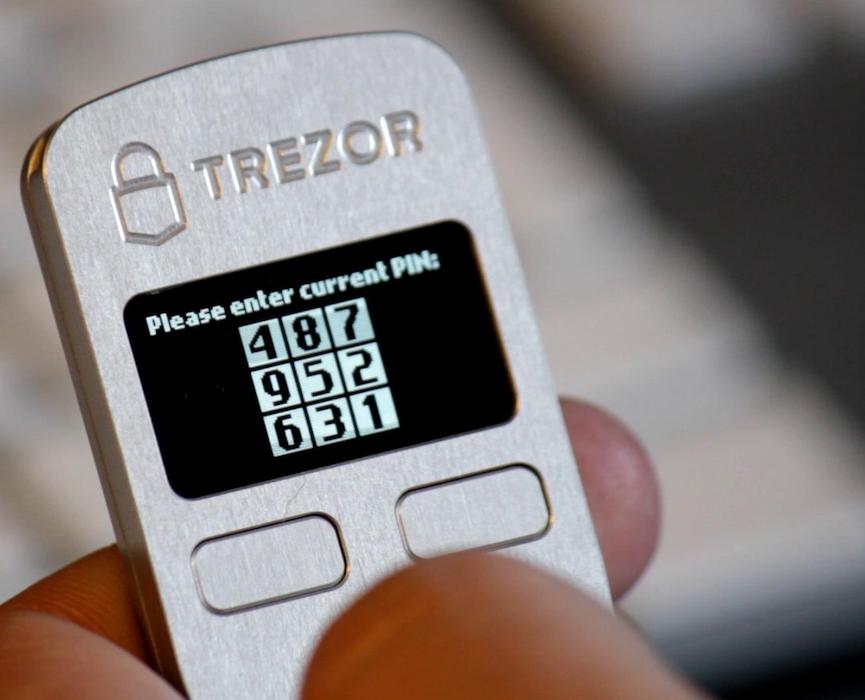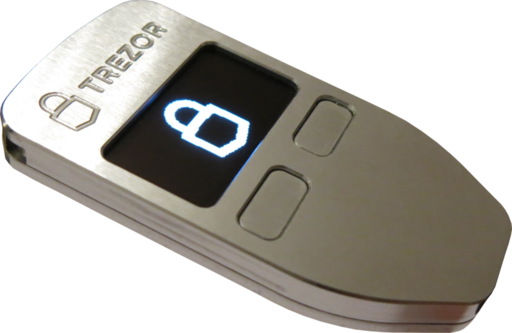Trezor One Review: Is The Original Still The Best?
In this article, I will dive deep in the Trezor One Review: Is the original still the best? Trezor One is the original hardware wallet. What does that mean exactly? This was the first physical manifestation of the “hardware wallet” for bitcoin offline security and was introduced to us from Satoshi Labs in 2014. This device is a small, trapezoid shaped device with a small OLED screen and 2 mechanical buttons which are used for confirming or denying transactions.
This is also used for generating your recovery seed during your first time setup, but we will address that a little later. This concept when it arrived in 2014, served a HUGE need in the market as at the time, most people mainly used a paper wallet for protecting their private keys and keeping them offline. This is still used today, but is used as a one way method, and is not ideal for making transactions or managing your portfolio. Not to mention, if anyone got a hold of that piece of paper, they could easily scan the QR code and steal your coins.
WHAT’S IN THE BOX?
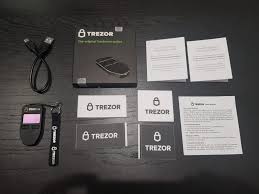

The Trezor One comes with: 2 recovery seed cards, a lanyard/wrist loop, 4 stickers, USB cable, and the device itself. The device is very small and has two mechanical buttons on the front of the device below the screen. It is powered on only when connected to a computer.
When you setup and initialize the device for the first time, you need to visit wallet.trezor.io on your chrome browser and click on “Trezor One”. This will pop up a screen where it show the security tabs on the box for you to inspect the device, before opening the box. This box is self destructive and is meant to have clear visibility to see if it’s been tampered with in any way.
Once you have done this, you will finally be prompted to “Continue To Wallet”. This is where the “bridge” comes in. What’s the bridge you ask? This is a small file download that is required for you to download and install to manage your device. It connects the web application to the device itself and validates the firmware.
WHAT COINS ARE SUPPORTED ON TREZOR ONE?


As of this writing, there are approximately 9 native applications that can be used directly in the web app, and about 1,000 coins supported via 3rd party wallets like Mycelium and MyEtherWallet. The native apps that Trezor One supports is as follows:
-Bitcoin (BTC)
-Bitcoin Cash (BCH)
-Litecoin (LTC)
-Dash (DASH)
-Zcash (ZEC)
-Doge Coin (DOGE)
-Bitcoin Gold (BTG)
-Digibyte (DGB)
-Vertcoin (VTC)
The list of all the other coins that are supported on the Trezor Model T or 3rd Party Wallets can be found here – https://trezor.io/coins/ 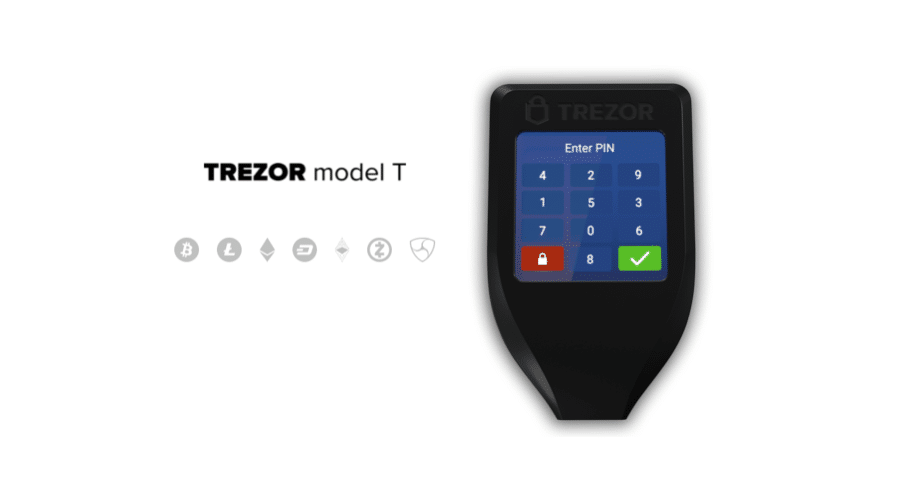

To me, this is the weakest point of this wallet is the native application support. They have invested a lot of time and developer resources to developing their “Beta” wallet, which is currently only supporting the Trezor Model T, which is Trezor’s 2nd generation device. In my opinion, the Trezor One is a decent entry level device, but I would not expect a growth of new coins being supported in the future.
The current price for this device is 69 EUR, which is approx $77 USD at the time of this writing.
CLICK HERE TO BUY THE TREZOR ONE FROM TREZOR’S OFFICIAL SITE
HOW TO SET UP THE DEVICE: FIRMWARE PROCESS
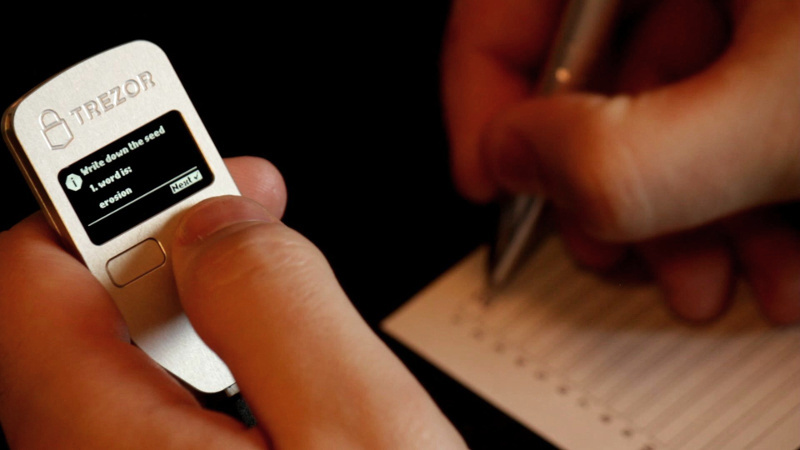

When the device is first shipped, it comes with NO firmware currently installed. This is a unique security measure that Satoshi Labs has employed to ensure that no MIM attacks or corrupt firmware was planted in the device during transit. When you setup the device and install the bridge, it will check the device is genuine and runs a check to insure the firmware (signed by Satoshi Labs) can properly be installed.
This process is seamless and once it’s installed, it will prompt you to create a 4-8 digit PIN that is shown on the device in random way using what’s known as an RNG (Random Number Generator).
Next, you will setup the 24 word recovery seed phrase which will walk you through each word (in order) shown on the device screen and will prompt you to write it down on the provided seed cards in the box. Once you write it down, it will walk you through confirming, and then it will test you and ask you, for instance…”What is word #17?”. You will then be required to choose the correct word. Once this is completed on 4 random words, you can confirm and the device will be initialized and ready to use the web application and make your first transaction.
CLICK HERE TO BUY THE TREZOR ONE FROM TREZOR’S OFFICIAL SITE
TREZOR SECURITY


What’s really unique about Trezor’s design is that there is no “username” or “password” for accessing the device. If someone walks up to your computer and see’s the dashboard, nothing can be done without physical access to the device to authorize a transaction.
In addition to the above, you can setup an optional “passphrase” or a 25th seed word so that if for any reason someone has access to your recovery seed, they still cannot steal your coins unless they also have your passphrase as well. If you decide to use this, DO NOT write it down anywhere and memorize this particular passphrase for extra protection.
They also use a process to validate firmware and authenticate your device where you private keys are stored called “Secure Boot MCU”. This process requires the bridge to verify that your device is genuine and signed by Satoshi Labs. This is unique and offers a security check every time you boot up the device to ensure you are properly connected to the correct location when accessing the web app. If something goes array, your device will throw an error warning and let you know not to trust the device if for any reason the bridge cannot connect to the proper web app.
TREZOR VS. LEDGER (MY EXPERIENCE)
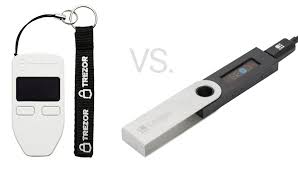

The two devices that I find are most used, especially for people who are new to hardware wallets, is the Trezor One or the Ledger Nano S. Let me first say they are both fantastic devices and serve a similar purpose. First off, they are both considered entry level devices and are built for the user that is not looking to store a lot of coins at once using the apps they each provide.
For instance, if you only want to store only Bitcoin and Ethereum, both devices would work, but only Ledger would have both of those work using native apps. Here are some questions you will want to ask yourself when deciding,
What coins am I planning to store on the hardware wallet?
What is my budget for getting started?
Do I plan to use any 3rd party wallets or just the basic apps that come with the device?
In terms of trust and reputation, I would lean towards the Trezor One, as it’s tried and true and is the original hardware wallet. The web app it uses can also be accessed from any computer, whereas the Ledger Nano S would require to download a desktop application to use it.
Final Thoughts On Both: Unless you plan on storing Ripple (XRP) or Tezos (XTZ), I would go with Trezor, as it’s easier to use on any computer, even if that computer is infected with malware, safely.
CLICK HERE TO BUY THE TREZOR ONE FROM TREZOR’S OFFICIAL SITE
CONCLUSION: BOTTOMLINE
PROS:
– Trezor One has a clean and functional web app that allows for customization and password management in the web app for all passwords to be encrypted from any other site as well.
– The device is cheap and really easy to setup. This is perfect if you plan on using the device on multiple computers or if you plan to use it for travel or you plan to use public computers.
– Has the extra security feature for the “Passphrase” which is a unique security measure that is not employed with the Ledger Nano S.
– The screen is large enough to display the full address when verifying and confirming transactions, unlike the Ledger Nano S.
CONS:
– Does not support some popular coins like Ripple (XRP) or Tezos (XTZ). It also does not use a native application for primary coins, like Ethereum (ETH).
– Is not the cheapest entry level device. You can still get a Ledger Nano S for only $59 if you’re getting started and you are very price conscious.
-You will need to upgrade to the Trezor Model T if you plan to use a lot of the newer coins that are being rolled out or coins that previously did not have hardware wallet support.
CLICK HERE TO BUY THE TREZOR ONE FROM TREZOR’S OFFICIAL SITE
What do you think? Is there a better wallet you recommend for people getting started? Let me know in the comments below!
Cheers,
The Crypto Renegade
NOTE: This post may contain affiliate links. This adds no cost to you but it helps me focus on giving as much value as possible in every single post by being compensated for recommending products that help people succeed.

